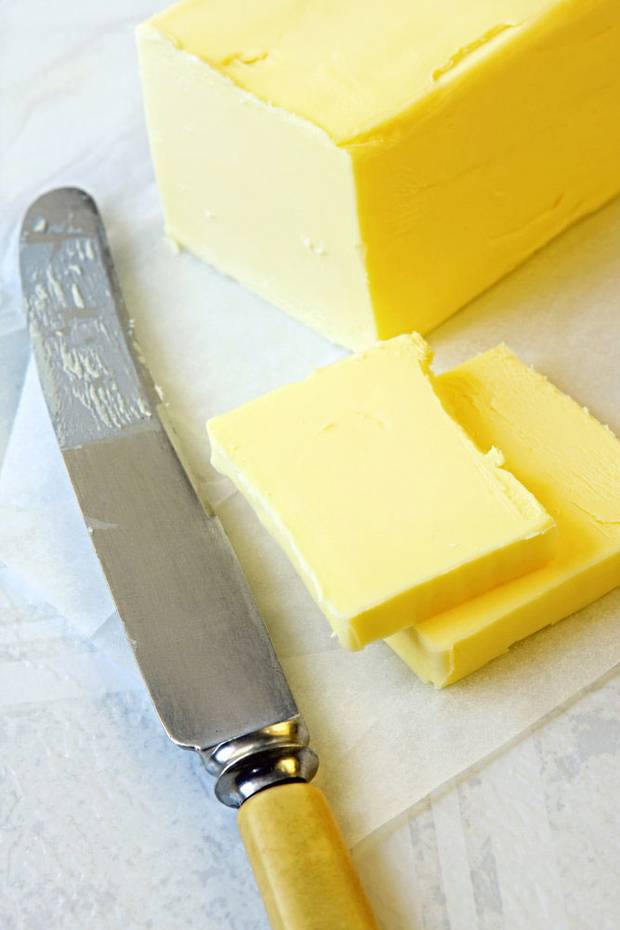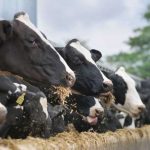
In recognition of your time, we’ll attempt to summarize recent events or actions making dairy headlines and reported in our weekly digital newsletter. Then we’ll try to put that news into perspective and briefly describe how it might affect you.
DAIRY LABELS
What happened?
While the dairy industry continues to wait on the U.S. Food and Drug Administration (FDA) to address standards of identity and labeling of dairy alternatives, a judge in the U.S. District Court for the Northern District of California has provided preliminary injunctive relief for a vegan company to market its plant-based product as “butter.”
What’s ahead?
In an order signed Aug. 21, U.S. District Judge Richard Seeborg granted permission to California-based Miyoko’s Kitchen to use the terms “butter,” “cruelty-free” and “lactose-free” while the court case proceeds. The order prevents the California Department of Food and Agriculture (CDFA) from enforcing regulations related to labeling and marketing of Miyoko’s plant-based product. The lawsuit, filed in February 2020, argues that the CDFA’s application of existing federal regulations is an unconstitutional violation of Miyoko’s right to free speech.
Although the preliminary ruling in the California case is a bump in a very long road, Alan Bjerga, senior vice president of communications with the National Milk Producers Federation (NMPF), notes the organization continues on a path for standards of identity for dairy products. Most recent progress came in the House Ag Appropriations bill.
A bipartisan amendment on the House floor directed FDA to allocate $5 million to enforce federal rules that reserve dairy-product terms for real dairy products. The committee report also directs FDA to finally start enforcing dairy product standards of identity, pursuant to a review process it began two years ago following pressure from NMPF and Congress.
Bjerga urges dairy producers to get involved. “It is extremely important that dairy producers raise the issue of labeling integrity with candidates for federal office this fall, as election season is a time when candidates – especially in a presidential election that may be decided in dairy states – are especially responsive to the public’s priorities,” he said in an email to Progressive Dairy.
MILK ON THE TABLE
What happened?
In late August, U.S. Rep. Fred Keller (R-Pennsylvania) introduced the Giving Increased Variety to Ensure Milk into the Lives of Kids Act (GIVE MILK Act). The legislation aims to increase milk consumption in the Special Supplemental Nutrition Program for Women, Infants, and Children (WIC) by giving participants over the age of two the option of having 2% reduced-fat milk and whole milk as part of their diet. According to Keller, the bill reverses an Obama administration-era rule limiting WIC participants to low-fat (1%) or nonfat milk.
What’s next?
Whether the proposal and others like it can make their way through Congress isn’t clear. On a separate track, the 2020-25 Dietary Guidelines for Americans update is scheduled for release at the end of 2020. The document is used as the basis for dairy options served as part of federal feeding programs.
There has been a renewed effort to expand milk options in domestic feeding and school milk programs to include higher-fat varieties.
Separately, the comment period on a 2020 Dietary Guidelines Advisory Committee (DGAC) draft report closed Aug. 13. For the most part, the draft report is status quo with the 2015-20 Dietary Guidelines, recommending consumption of low-fat and fat-free dairy products as part of a healthy diet.
While supportive of the report’s numerous recommendations about the importance of dairy in a healthy diet, several dairy organizations criticized the report for failing to recognize studies indicating the health benefits, or at least neutral impact, of fuller-fat dairy options. Whether efforts to get higher-fat milk included in the recommendations are successful remains to be seen.
CORONAVIRUS FOOD ASSISTANCE PROGRAM (CFAP)
What happened?
Depending on when you receive this magazine in your mailbox – and barring any further extension – the deadline to sign up for Coronavirus Food Assistance Program (CFAP) payments just closed. The USDA had previously extended the deadline from Aug. 28 to Sept. 11.
What’s next?
House and Senate versions of another round of federal assistance for farmers suffering financial losses due to the coronavirus pandemic remain wide apart. Talks were not expected to resume until Congress returned after Labor Day. So the final answer to “what’s next?” will have to wait.
We do know that the USDA continues to buy dairy products for domestic feeding programs, including distribution through the Farmers to Families Food Box Program. More than 70 million CFAP food boxes had been distributed through late August, with ag commodity purchases totaling about $2.7 billion. As of late August, President Trump had promised up to $1 billion more in food purchases for the program.
The bottom line for dairy farmers is twofold. First, the USDA dairy product purchases have created demand and put a lot of support under milk prices this summer. Current milk futures prices, however, indicate that impact is starting to ebb.
The second, and more perhaps tangible aspect of CFAP, is the direct payments made to U.S. dairy farmers. As of Progressive Dairy’s deadline (week of Aug. 24), dairy applications processed by the USDA Farm Service Agency (FSA) offices stood at 23,246, with direct dairy payments totaling just over $1.699 billion. The second (and smaller) installment of CFAP payments were just getting underway.
Depending on your starting point, CFAP signup through Aug. 24 represented about 68% of the average number of dairy farms licensed to market milk in 2019 (latest estimate available), or 88% of dairy operations with annual milk production history recorded with FSA under the Dairy Margin Coverage program.
Weekly USDA updates provide some interesting preliminary analysis.
Signup for the program began May 26. Through the first three months of the CFAP program, Wisconsin received the highest number of CFAP payments in terms of both applicants (5,822) and total dollars ($333.3 million). However, in terms of average payment per applicant, Wisconsin ranked 28th, at $57,253.
It’s no surprise that the leading states in terms of applicants are where the dairy farms are, regardless of herd size:
Wisconsin 5,822
Pennsylvania 2,574
New York 2,544
Minnesota 2,425
Iowa 966
Leading states in terms of total dairy payments are where lots of milk is produced:
Wisconsin $333.3 million
California $251.0 million
New York $161.4 million
Minnesota $105.4 million
Pennsylvania $101.6 million
With the larger herd sizes and higher volumes of milk marketings, average payments per dairy applicants were highest in the West. Payments to date averaged more than $100,000 in 14 states:
New Mexico $354,615
Arizona $335,559
Nevada $320,337
Colorado $298,865
California $263,144
Florida $243,982
Idaho $224,993
Washington $174,428
Texas $172,929
Oregon $140,373
Wyoming $140,225
Utah $128,163
Georgia $120,829
Michigan $101,757

























